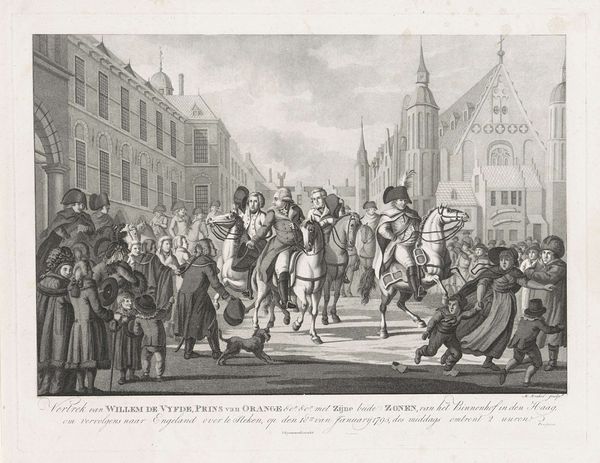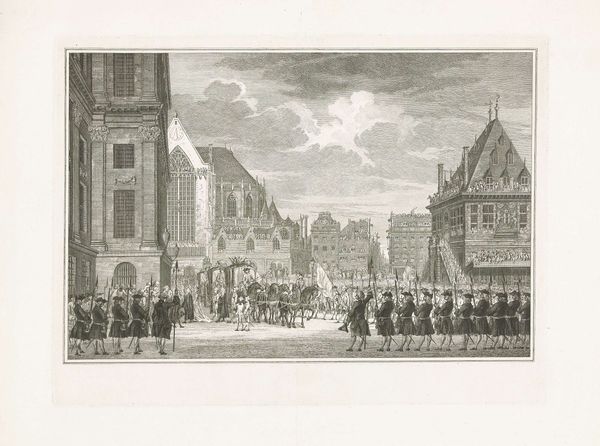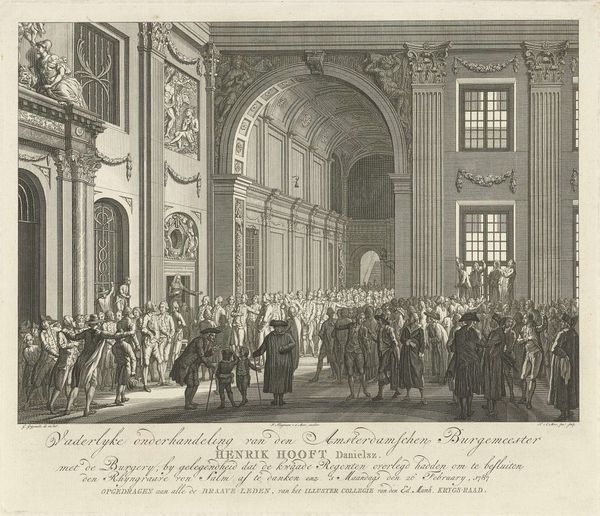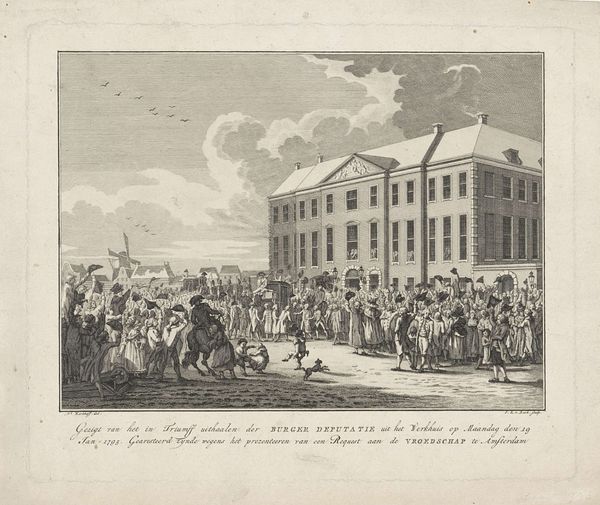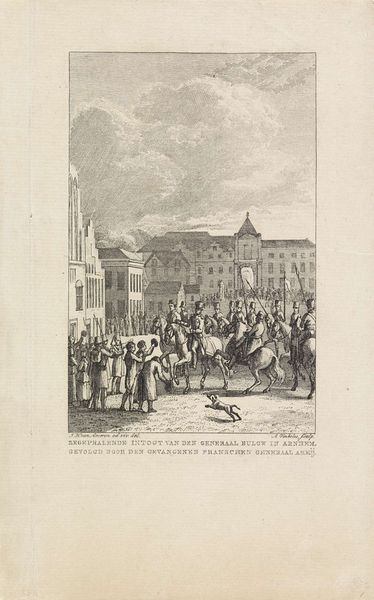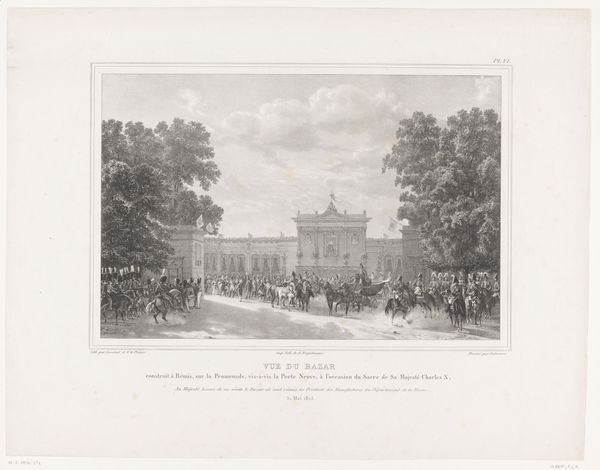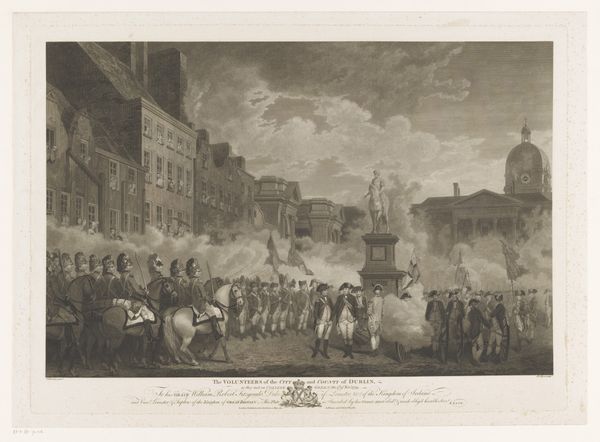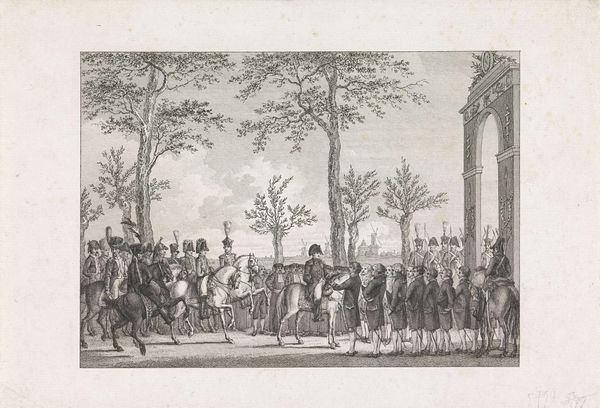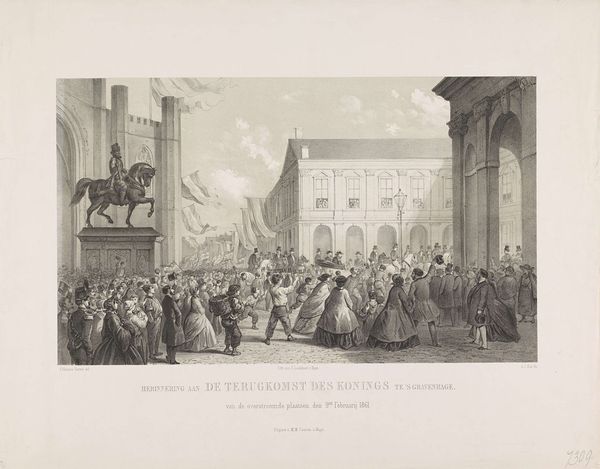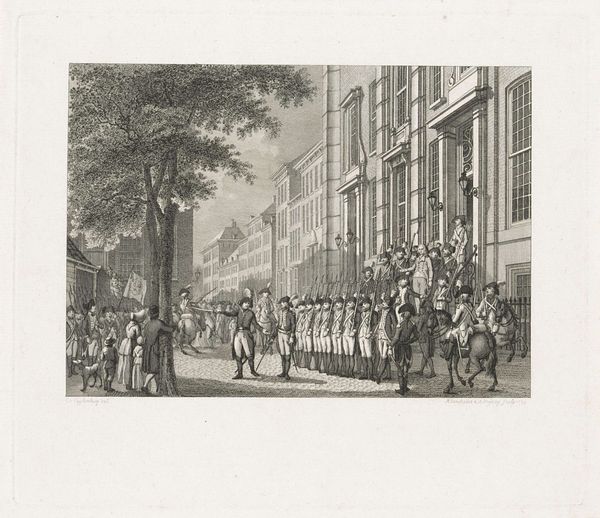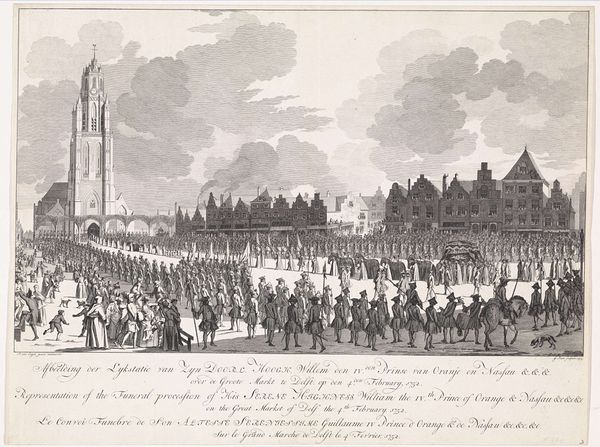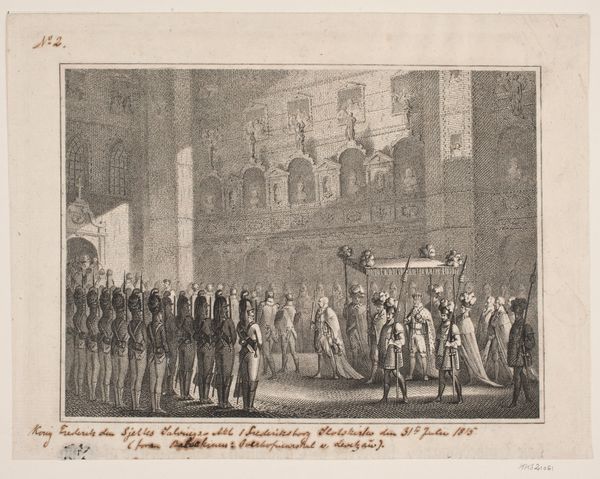
Het Binnenkomen van het Eerste en Tweede Bataillon der Eerste Afdeeling Mobiele Noord Hollandsche Schutterij. Amsterdam, den 5 September 1834 1834
0:00
0:00
johannessteyn
Rijksmuseum
lithograph, print, engraving
#
lithograph
#
ink paper printed
# print
#
old engraving style
#
cityscape
#
history-painting
#
engraving
#
realism
Dimensions: height 458 mm, width 543 mm
Copyright: Rijks Museum: Open Domain
Curator: This lithograph print captures a moment in time: the arrival of the First and Second Battalions of the First Division of the Mobile North Holland Militia in Amsterdam, September 5th, 1834, as imagined by Johannes Steyn. Editor: It's remarkably detailed, and the composition evokes a very precise mood—almost celebratory, yet restrained, captured in black and white. I'm struck by the weight of that imposing building to the left, balanced against the dark, feathery tree. Curator: Absolutely. Buildings are often imbued with cultural symbolism. Think of architecture as representing permanence, stability. This is juxtaposed by the thronging crowds, hinting at dynamic social currents. How interesting is the use of linear perspective to draw the viewer into the scene? What symbolic values might you associate with that vanishing point? Editor: It directs our attention not just to the city beyond but perhaps to the industrial workshops implied in the making of such a meticulous print. Look at the way Steyn used lithography, a process involving laborious preparation of the stone, layering the images with detail—it mirrors the way those soldiers, ordinary folk made into soldiers, form their ranks. Curator: Indeed. Lithography as a democratized form of image production mirrors the democratization inherent in citizen militias of the period. The event commemorated has symbolic significance that echoes ideals of civic duty, and national pride, which speaks directly to the viewer's perception of duty and honor. Editor: This intersection—material, method, and social event—brings forward such notions as "heroic narratives" by memorializing, and inevitably framing the labor behind civic spectacle, making it available to broader consumption. Even though the piece aims to highlight an achievement, its production, reliant on workers, points to the foundation those soldiers defend. Curator: Well, examining both process and symbolic context gives us an entry point to understanding not only the historical event, but how this print worked as a piece of propaganda. Editor: Perhaps all historical pieces can teach us, across the centuries, how an image reflects both ideals and conditions of its making.
Comments
No comments
Be the first to comment and join the conversation on the ultimate creative platform.

